Image-Based 3D Modeling of Sails
In this project, we developed an image-based approach to measuring and analyzing the 3D shape of sails and delivered to team Alinghi a software package provides accurate curvature measurements. It can be used to monitor the behavior of the spinnaker and main sail under real sailing conditions and to improve their design accordingly. We have pursued this work with Bernard Stamm’s Rivage Team.
This is important because quantitative measures of the sail shapes allow the design team to compare the behaviors of the same sail under different wind conditions, of sails of similar shape but made of different materials in the same conditions, and of sails of different design. This leads to a finer understanding of what sails do under real sailing conditions and, ultimately, to increased performance. In the longer run, it will also serve to validate and improve simulation tools. Such tools predict a particular behavior and comparing it to the actual one will allow our mechanical engineering colleagues to improve them to the point where their predictions match reality as closely as possible.
Results
This was challenging because modeling 3D deformable surfaces from video is extremely error-prone, especially when using a single camera. It would be totally under-constrained problem without an appropriate deformation model, that is, one flexible enough to account for all possible configurations but controlled by sufficiently few parameters for effective optimization. We addressed it by developing an original approach to creating such models, which are well adapted to the application at hand and could be extended to a much broader range of deformable surfaces.
Recovering the 3D shape [top]
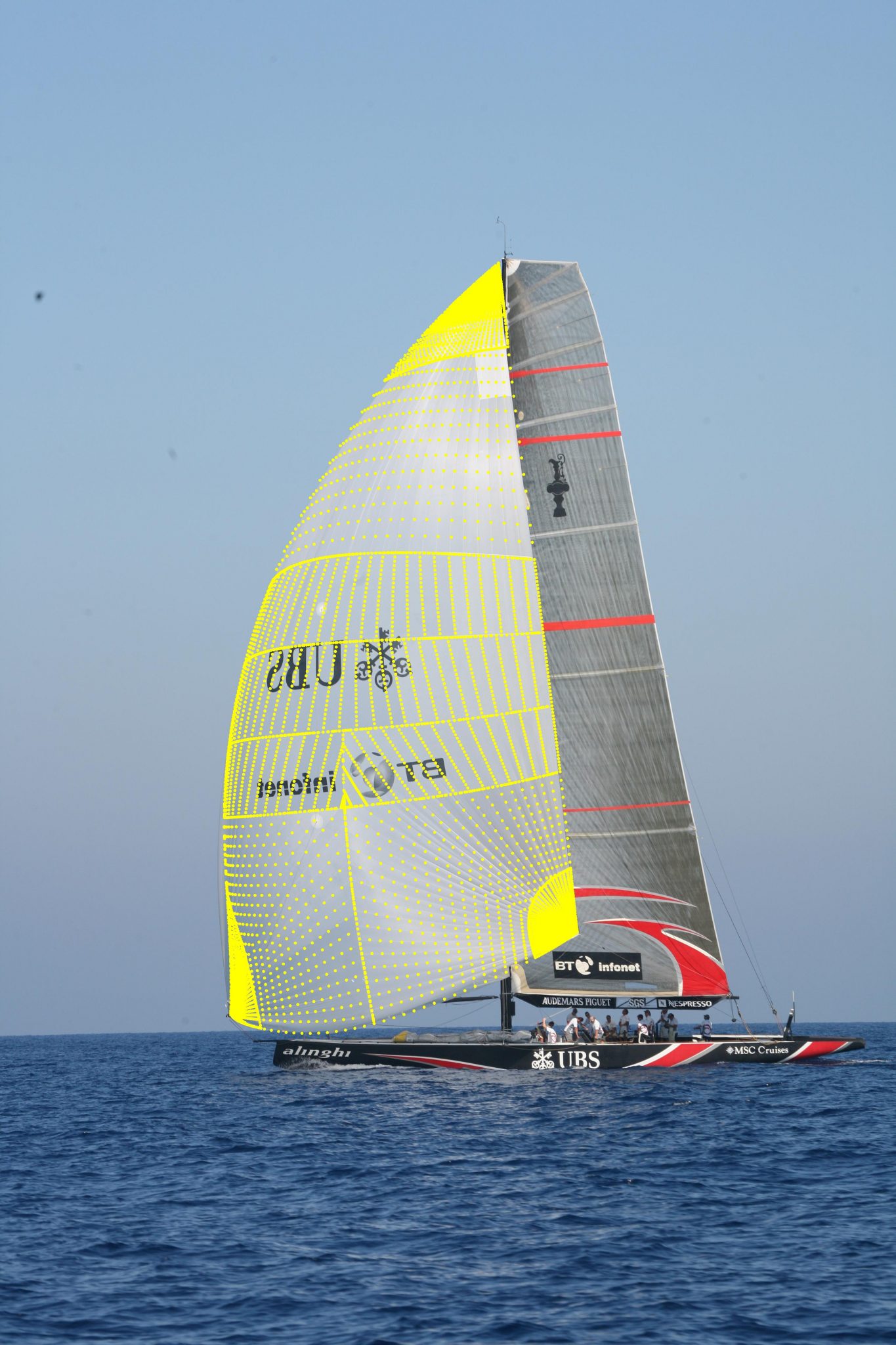
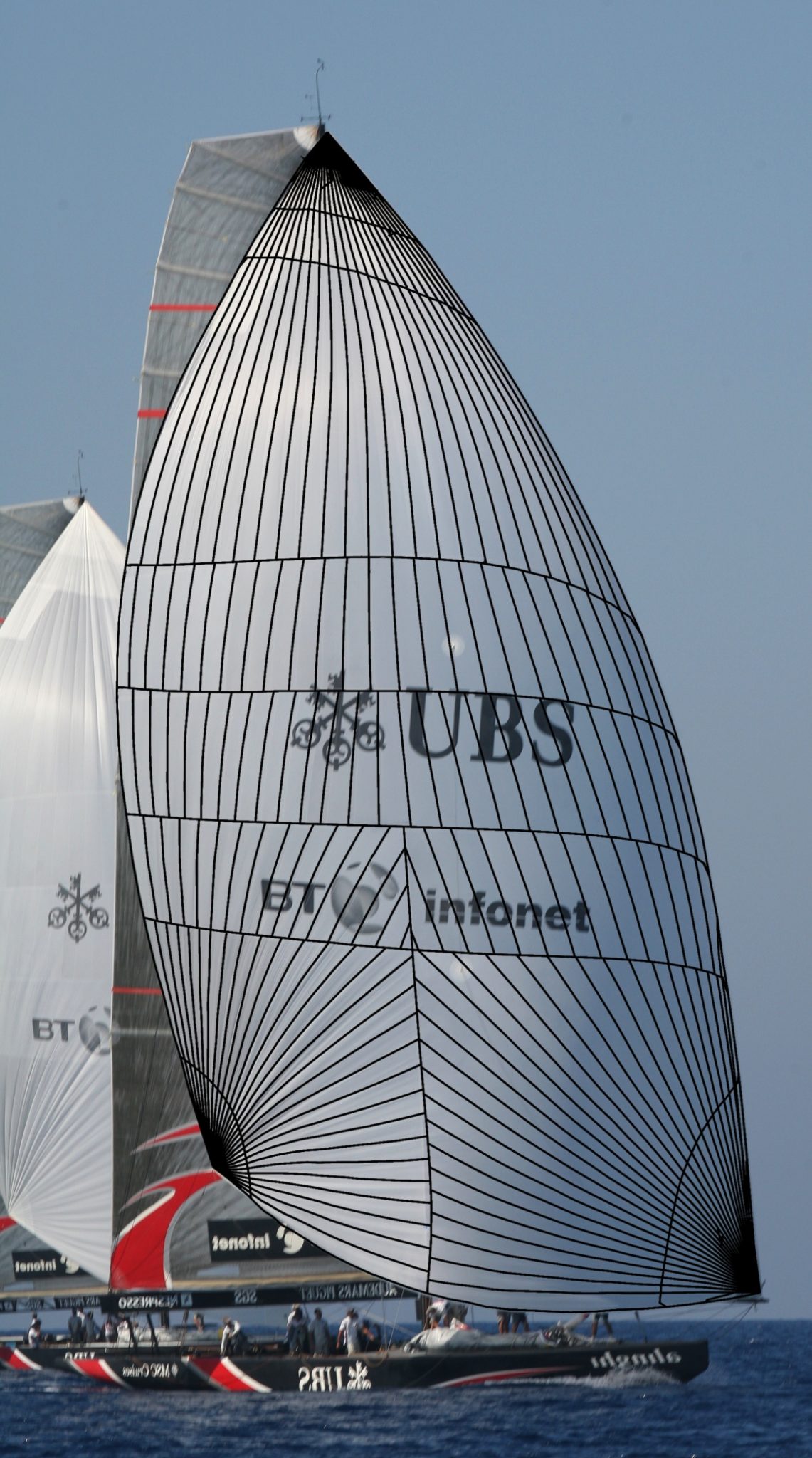
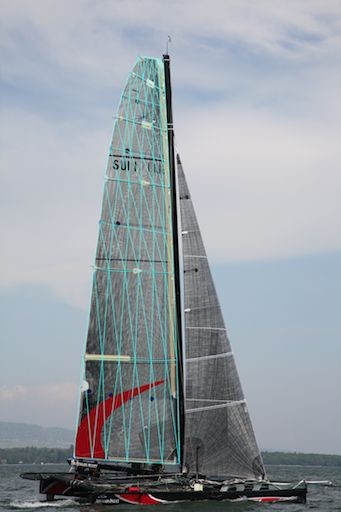
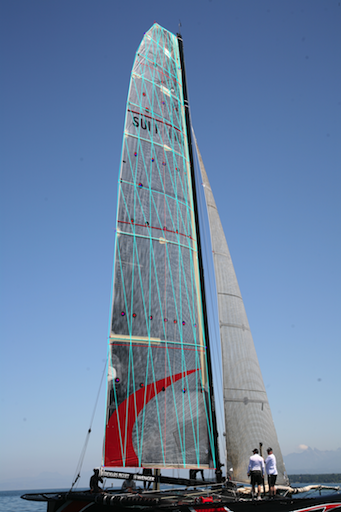
The 3D shapes of the spinnaker and main sail have been recovered from images. The overlaid triangulated meshes represent the reprojection of the 3D model onto these images.
Shape Analysis Software Package [top]
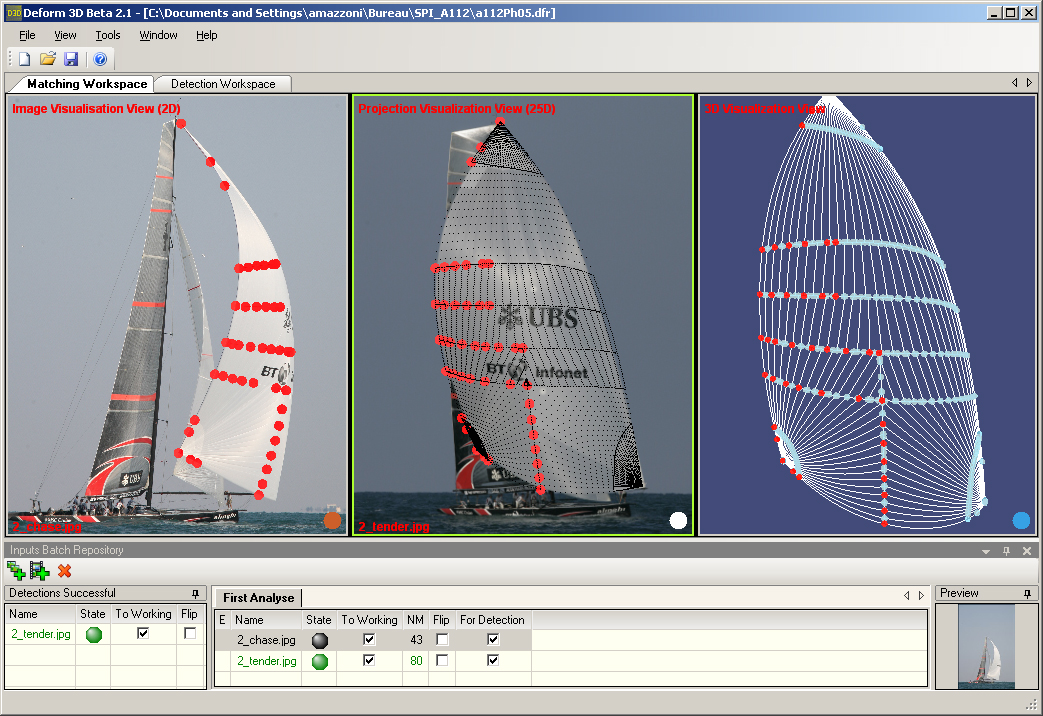
Our techniques have been incorporated into a complete software package that has been delivered to Team Alinghi. It lets them produce 3D shapes such as the one shown on the right from the images such as the ones on the left. From these shapes, significant curvature measurements can be derived.
Publications
Fast Non-Rigid Surface Detection, Registration and Realistic Augmentation
International Journal of Computer Vision. 2008. Vol. 76, num. 2, p. 109-122. DOI : 10.1007/s11263-006-0017-9.Linear Local Models for Monocular Reconstruction of Deformable Surfaces
IEEE Transactions on Pattern Analysis and Machine Intelligence. 2011. Vol. 33, num. 5, p. 931-944. DOI : 10.1109/TPAMI.2010.158.Contacts
| Vincent Lepetit | [e-mail] |
| Pascal Fua | [e-mail] |